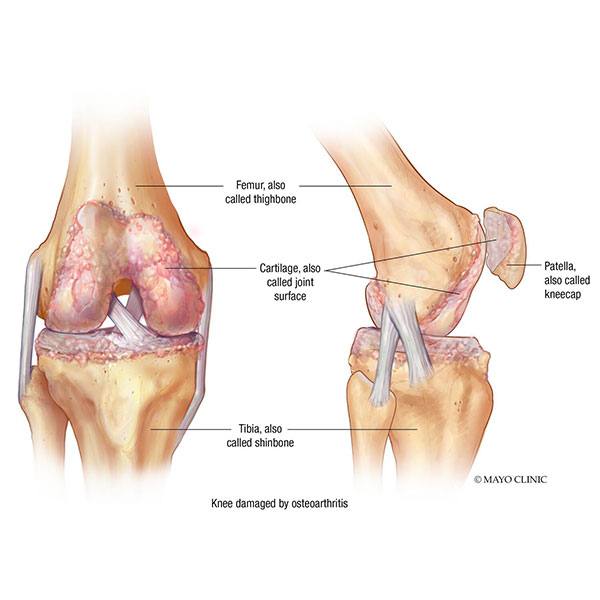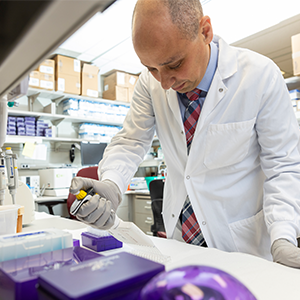-
Science Saturday: Mayo Clinic scientists identify a new way the liver cells break down fat
In a study published December 7, 2020, scientists at Mayo Clinic identify a new way liver cells break down fat. This study, published in the Proceedings of the National Academy of Sciences of the United States of America, demonstrates that liver cells use fats more efficiently using cellular processing plants called lysosomes — a new observation in mammalian cells.
“The liver is a sophisticated filtration system for the body’s blood supply and has evolved to deal with surprisingly large daily fluctuations in fat content,” says Mark McNiven, Ph.D., a Mayo gastroenterology researcher and director of Mayo’s Center for Biomedical Discovery. “However, some people are especially susceptible to the storage of excessive fat in their liver, a condition referred to as metabolic-associated fatty liver disease.”

“Across the globe, nearly one in four people have abnormally high levels of fat in their liver, with even higher levels in the US and other Western cultures,” says Dr. McNiven. “To prevent patients from getting to these late stages of advanced liver disease, we must understand the early, reversible stages of fat accumulation.”
The researchers do that by studying the biology of how the liver normally processes stored fat.
Well-Fed Cells Break Down Fat Directly
Lipids, or “fat,” can be pulled out of the bloodstream by liver cells called hepatocytes. The fat accumulates within structures called lipid droplets. In a cellular form of self-renewal known as “autophagy,” these fat deposits are broken down by the cell's waste disposal and recycling system, called lysosomes.
Previous work from Dr. McNiven's group examined how fat droplets were processed by hungry cells. In this effort, the researchers also looked at cells that were well nourished.
The team coated lipid droplets with a glowing marker. Under the microscope, this marker changed color only when the droplet was consumed by a lysosome, suggesting that the lipid droplets were directly interacting with lysosomes. But lysosomes are small and move throughout the cell quickly, so the researchers turned to still images of the cell using electron microscopy.
“This allowed us to visualize snapshots of hepatocytes in great detail,” said Ryan Schulze, Ph.D., first author on the paper. “We could observe direct contacts between lysosomes and lipid droplets with excellent resolution and showed that the lysosomes appeared to take “bites” out of lipid droplets or, in some instances, even swallow them whole despite the cells being well-fed.”

This direct interaction between the lysosome and lipid droplets, without the development of the traditionally-understood machinery associated with autophagy is a new observation for mammalian cells of any type. The researchers speculate that this process might provide a previously unappreciated source of liver-derived energy that could be used for export to other cells or organs.
“Our study provides an essential foundation for exploring the fundamental aspects of this interaction within the hepatocyte and, significantly, how disruptions in this process might influence the progression of complex liver diseases,” says Dr. McNiven. The next step for the team includes determining how widely used this process is in hepatocytes and how it is regulated.
In addition to Drs. McNiven and Schulze, other authors from Mayo are: Eugene Krueger, Shaun Weller, Katherine Johnson, and Micah Schott, Ph.D. Carol Casey, Ph.D. from the University of Nebraska Medical Center is also an author. Funding for this work was provided by federal grants and other sources. For a full list, see the publication on the Proceedings of the National Academy of Sciences of the United States of America website.
Discovery Research Expertise
Mayo Clinic is an established leader in research on complex liver diseases with its Center for Cell Signaling in Gastroenterology and Center for Biomedical Discovery. Mayo is also only one of two Medical Centers in the world with an NCI supported Specialized Program of Research Excellence (SPORE) to study and treat cancers of the liver. Dr. McNiven is co-director of this program, along with Lewis Roberts, M.B.,Ch.B., Ph.D.
- To read about the McNiven lab’s work related to hepatocyte fat metabolism, visit their lab webpage.
- For more information on Mayo’s Center for Biomedical Discovery, click through to the video overview.
- To read more about liver disease, visit the nonalcoholic fatty liver disease information page from Mayo.







